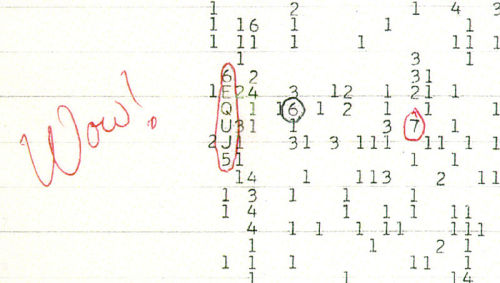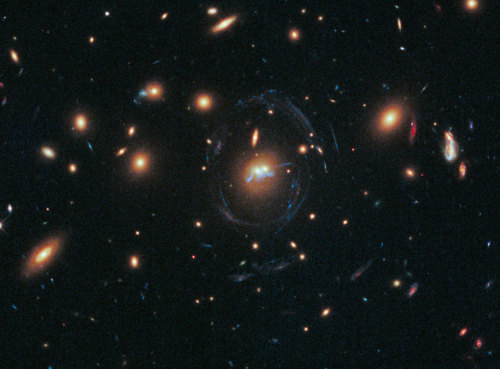Black Holes
Black holes

Perseus Black hole
Black holes are objects that have collapsed under their own weight to a point, creating an object that is very small but enormously dense. It is a region of space that has a gravitational pull so strong that no imminent particle or electromagnetic radiation can escape from it. This astonishing concept of black hole was first given by John Michell in 1783.He proposed that if you take the sun and compress it to a very small volume it would have a gravitational pull so strong that you have to travel at speeds greater than the speed of light to escape it.At first black holes are thought to be theoretical concepts which do not exist. But later they turned out to be very real. So how do these giant suckers form?
In order to understand the formation of a black hole we need to understand the formation and the life cycle of stars. A star is formed when large amounts of dust and gases, mainly hydrogen gas condense and collapse under its own gravitational force. As the gas collapses, the atoms of the gas collide with each other at higher and higher speeds resulting in the heating of the gas. Ultimately the gas becomes so hot that when the hydrogen atoms collide they don’t bounce off, but fuse together to form helium atoms, same as in the hydrogen bomb. As a result a large amount of heat is released which is the reason why stars shine. This heat increases the pressure of the gas until it balances out the gravitational pull and the gas stops contracting. Hence a star is formed.
The stars are usually stable as long as they have hydrogen in them. As the hydrogen runs out, the fusion reaction stops. To keep the fusion reaction going the star turns to its helium reserve. After it runs out of helium, it switches to carbon, and then oxygen. Stars with the mass of our Sun stop at this point as they don’t have enough energy to continue the fusion process and become white dwarfs. But stars with about 5 times the mass of our sun continue further to produce silicon, aluminum, potassium so on up to iron. No further energy can be produced by fusing iron atoms so the star starts to cool down. Once the external force of radiation stops acting the gravitational pull takes over and the star begins to contract. The entire mass of the star collapses into smaller and smaller volume of space. Eventually when the star has contracted to a certain critical radius, the gravitational field at the surface becomes so strong that even light cannot escape it. And this is how a black hole is formed.
Another way of formation of black hole is when two neutron stars collide with each other. When they collide their combined mass results in a very high gravitational force that leads to a collapse and a black hole is formed.

In this image, information from the Chandra X-ray Observatory is combined with images from the Hubble Space Telescope. NASA believes these two black holes are spiraling toward each other and have been doing so for 30 years.
More Posts from Xnzda and Others

The Infrared Visible Andromeda: This remarkable synthetic color composite image was assembled from archives of visible light and infrared astronomy image data. The field of view spans the Andromeda Galaxy are also included in the frame. via NASA
js

lesbians in space

The Wow! signal.
A signal sequence that lasted for 72 seconds in 1977 but has never been seen again. The signal appeared to come from a globular cluster in the Sagittarius constellation, but to this day no definite answer for where the signal originated can be given.

The Icy Comet
This image of Comet C/2001 Q4 (NEAT) was taken at the WIYN 0.9-meter telescope at Kitt Peak National Observatory near Tucson, Ariz
Image credit: NASA/ National Science Foundation
have y’all seen that nasa pic of the earth with the sun behind it on the night time side it really really fucked me up my own soul became solid and like………….. weeped!
Five-dimensional black hole could 'break' general relativity
Cambridge UK (SPX) Feb 19, 2016 Researchers have shown how a bizarrely shaped black hole could cause Einstein’s general theory of relativity, a foundation of modern physics, to break down. However, such an object could only exist in a universe with five or more dimensions. The researchers, from the University of Cambridge and Queen Mary University of London, have successfully simulated a black hole shaped like a very thi Full article
-
 xnzda reblogged this · 5 years ago
xnzda reblogged this · 5 years ago -
 ctbloom liked this · 8 years ago
ctbloom liked this · 8 years ago -
 thecherrypieguy liked this · 9 years ago
thecherrypieguy liked this · 9 years ago -
 crunchypeachboi liked this · 9 years ago
crunchypeachboi liked this · 9 years ago -
 queen-catxxii reblogged this · 9 years ago
queen-catxxii reblogged this · 9 years ago -
 queen-catxxii liked this · 9 years ago
queen-catxxii liked this · 9 years ago -
 galaxyamaze reblogged this · 9 years ago
galaxyamaze reblogged this · 9 years ago -
 beautifulintellectualwoman liked this · 10 years ago
beautifulintellectualwoman liked this · 10 years ago


